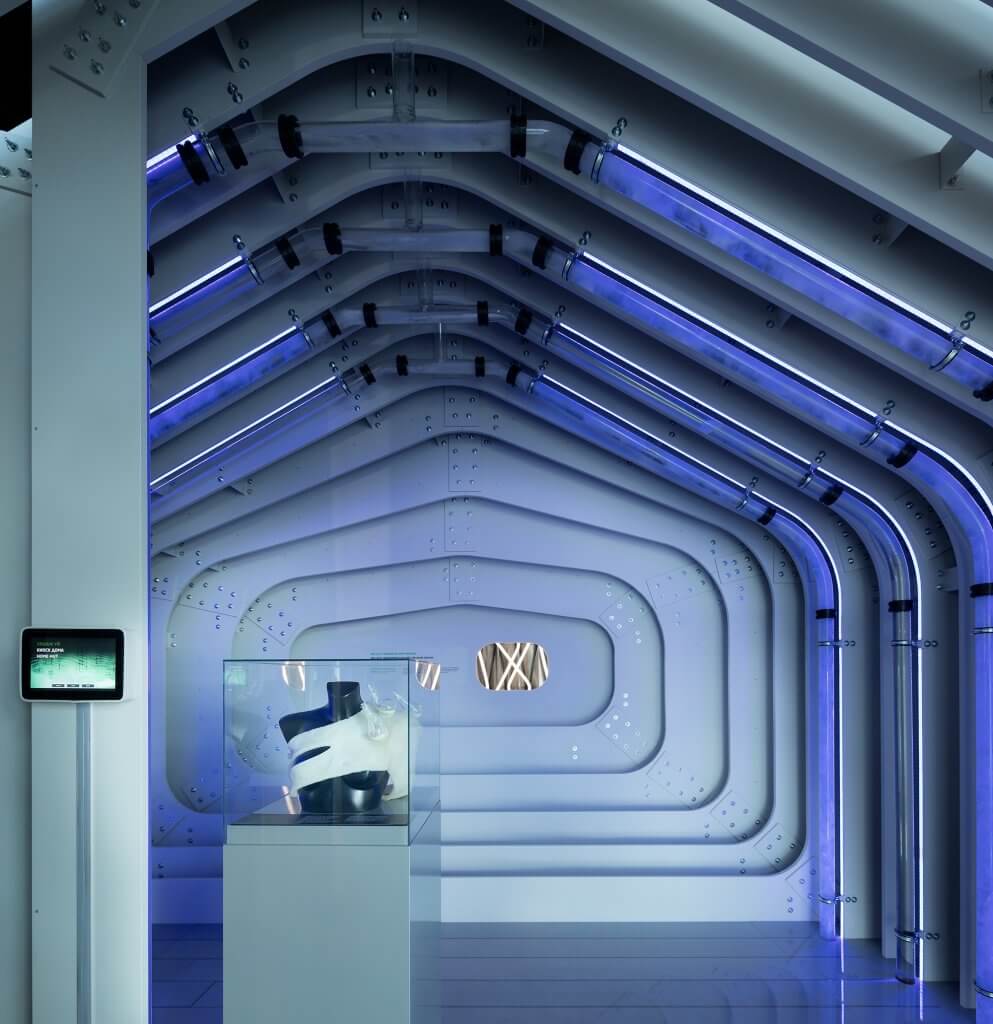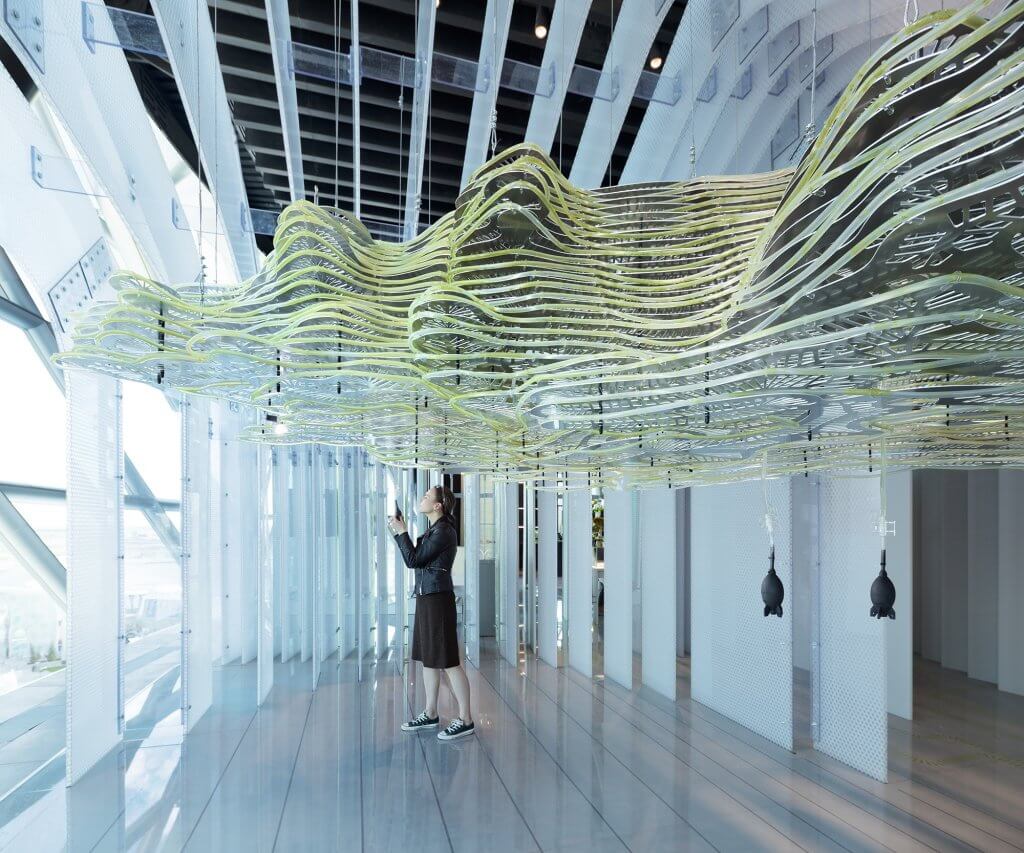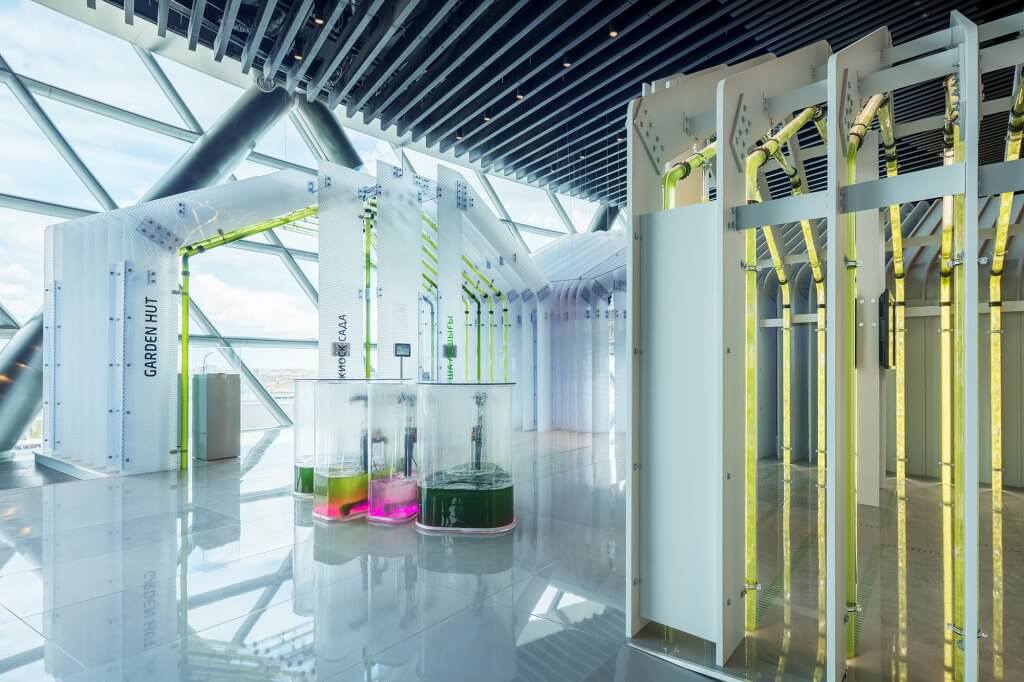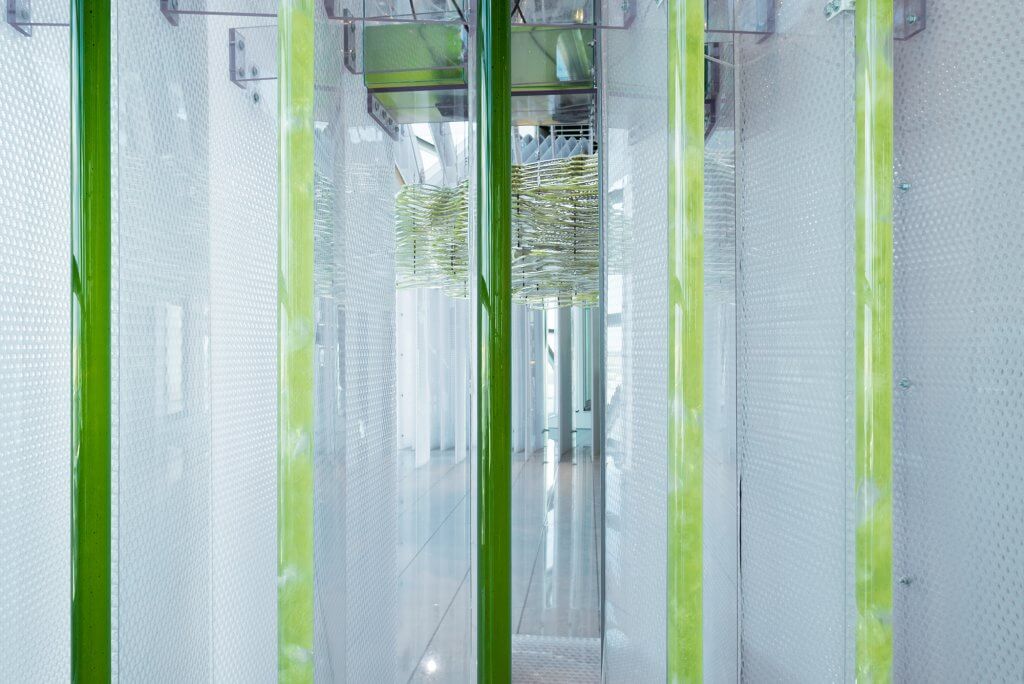Algae-producing architecture a “future energy” highlight at Astana Expo 2017
An urban “algae farm” producing low-carbon protein and bio-fuel is one of the highlights on show this week at the future energy-themed Astana Expo 2017 in Kazakhstan.
London-based EcoLogicStudio’s BIO.tech HUT is a three-part pavilion at the biennial world fair event, exploring the boundaries of biologically based architecture. The prototype aims to “probe the future, test scenarios and promote the emergence of a new narrative in future energy”.
Bio.light room
The first part of the exhibit, the Bio.light Room, is a dark space in which the only visible light emitted is from bioluminescent bacteria. The organisms absorb energy through photosynthesis in tubes that encircle the outside of the pavilion, lighting up the dark part of the exhibit when shaken and oxygenated.

Bio.light Room. Image ©NAARO
H.O.R.T.U.S. (Hydro Organisms Responsive to Urban Stimuli) room
Another room (H.O.R.T.U.S.) flooded with natural light, hosts an art installation containing photosynthetic micro algae. Visitors are encouraged to engage with the micro algae using carbon dioxide to produce oxygen bubbles in 700 meters of glass tubing (see image below).

H.O.R.T.U.S. (Hydro Organisms Responsive to Urban Stimuli) room. Image ©NAARO
Garden hut
A third area, Garden Hut, uses a high-speed air flow to lift algae into glass tubes, generating a stirring effect that allows the desired oxygen and carbon dioxide exchange to occur, before falling back with gravity. A pump isn’t needed, a method that the team thinks hasn’t been used in algae production previously.

Garden Hut. Image ©NAARO
Climate benefits
Five tubes containing different types of algae loop the exhibit, collecting in tanks for harvest as super-food or bio-fuel.
EcoLogicStudio estimates the hut can produce enough algae-based protein for 12 adults, the protein equivalent of eight cows. By switching to an algae protein diet, the overall net contribution to carbon sequestration of the BIO.tech HUT would be around 90kg per day — the same carbon sequestration potential of 500 square meters of forest.
The BIO.tech HUT can also produce about 1kg of bio-fuel a day, comprising either dry algae or oil produced by green algae — enough to power a north European home.
According to Marco Poletto, Director at ecoLogicStudio, it makes more sense for to produce food from the algae produced. To realise the ambition of bringing microorganisms into architecture, “in an urban environment you are looking to grow strains that have higher market value”, he said.
Where can you see BIO.tech HUT?
You’ll have to travel a fair distance to attend Expo 2017, which is being held in Astana, Kazakhstan until 10 September 2017.
According to Expo 2017 Commissioner Rapil Zhoshybayev, this year’s future energy theme “will serve as the attraction centre for new technologies”.
Other exhibits include the Austrian national pavilion, which encourages visitors to use their bodies to produce energy, and includes a room full of stationary bicycles. The French showcase is based around sustainable cities, renewable energy and eco-compatible mobility — three areas of innovation in which France positions itself as a leader.
Also on the algae them and a little closer to home, the Danish city of Aarhus is, this summer, hosting the “Urban Algae Folly” exhibit, also by EcoLogicStudio, which uses algae from the city’s waterways to produce bio-fuel and food.

Glass tubes coiled round the BIO.tech HUT. Image ©NAARO

